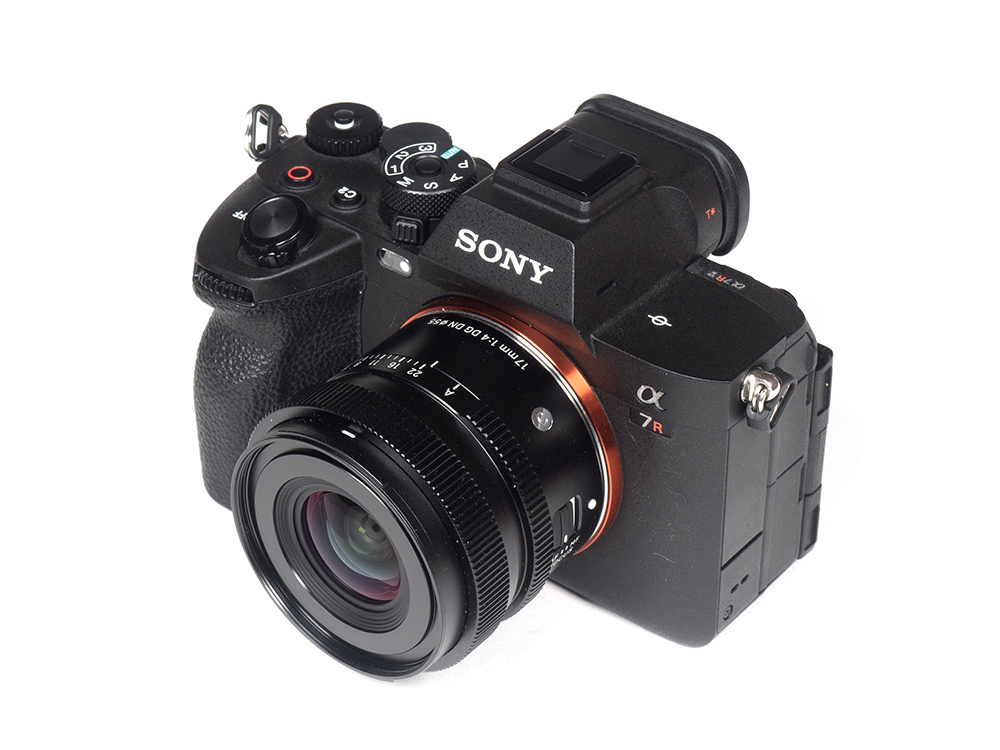Some may not understand it, but from a personal perspective, yours truly has long waited for a “premium” super-ultra-wide prime lens, and it doesn’t need to be fast as long as it’s compact. So now, we (or maybe just I?) have a new contender for a place in the photo bag—the Sigma 17mm f/4 DG DN Contemporary | Series I. Based on the paper specs, it does many things right in terms of compactness, but some may argue that $600 USD for an f/4 lens may be a bit overpriced given its slow speed. So, let’s see where it fits in.

Maybe it’s my German heritage and “our” preference for heavy metal – Germans do love tanks, as you may know – but the build quality of these lenses just feels awesome. And this also applies to the 17mm f/4. The nice, cool metal body, the silky smooth focus ring and the “bold” aperture click all feel just right. The metal hood and magnetic lens cap make it even better. A disclaimer here, though – the metal lens hood is somewhat prone to scratches. Despite all the metal, it weighs only 220g. The lens uses an internal focusing mechanism, so the length remains constant during focusing. There’s no full weather-sealing but only a mount gasket. Thanks to the non-protruding front element, filters can be used, and due to a 55mm filter thread, they remain quite affordable.
The Sigma 17mm f/4 DG DN uses an older-style stepping motor. Due to its ultra-wide nature and small lens elements, it’s still extremely fast and noiseless. Manual focusing works by-wire, as usual.
| Specifications | |
|---|---|
| Optical construction | 9 elements in 8 groups (2x SLD, 3x aspherical) |
| Number of aperture blades | 7 (rounded) |
| min. focus distance | 0.12m (max. magnification: 1:3.6) |
| Dimensions | φ64 × 48.8mm |
| Weight | 220g |
| Filter size | Ø55mm |
| Hood | petal-shaped, metal, magnetic, bayonet mount, supplied |
| Other features | mount gasket |
Distortion
The Sigma lens produces a heavy, albeit not excessive, barrel distortion of 4.1% in RAW images. This is roughly in line with what we’ve seen during the DSLR era, whereas some mirrorless-centric ultra-wide lenses perform substantially worse (especially zoom lenses).
Even so, auto-correction to eliminate the problem is still advisable.
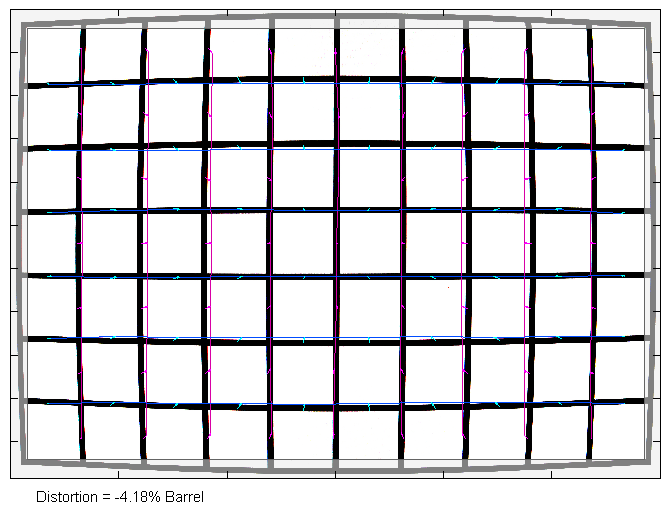
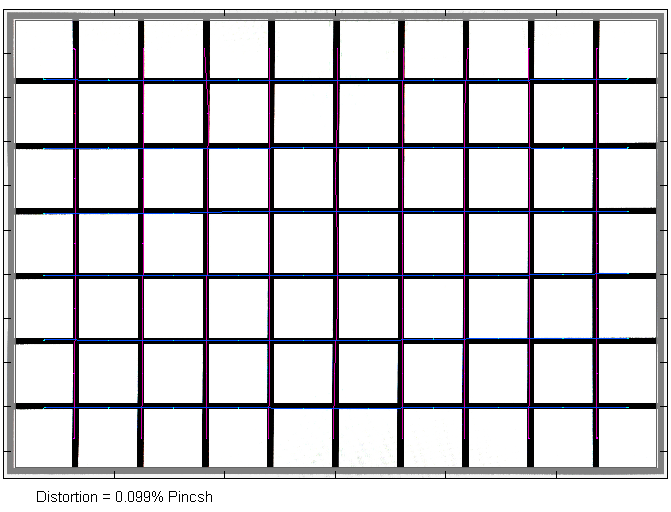
Vignetting
Unsurprisingly, the light falloff is very high (~3.4 EV/f-stops) in RAW images. This is in part due to the unavoidable “natural” vignetting. However, stopping down doesn’t really help tame it. At f/11, the vignetting is still at a rather whopping 2 EV (f-stops). Auto-correction shaves off 1.5 EV at f/4, and the issue is acceptable from f/5.6, although the vignetting never disappears completely.

MTF (resolution) at 42 megapixels
The resolution characteristic of the Sigma 17mm f/4 DG DN is a bit weird. Typically, ultra-wide lenses tend to have an extremely sharp center. The center quality of the Sigma lens is still very high, but it’s just slightly dampened compared to other lenses in this class that we’ve tested over the years. However, the good news is—and that’s probably more important with such a lens—the outer image field is good to very good straight from f/4. The slightly higher peak performance is reached at f/5.6. Diffraction has a higher impact from f/11, as usual.
The field curvature is moderate. The centering quality of the tested sample was Ok.
Please note that the MTF results are not directly comparable across the different systems!
Below is a simplified summary of the formal findings. The chart shows line widths per picture height (LW/PH), which can be taken as a measure of sharpness. If you want to know more about the MTF50 figures, you may check out the corresponding Imatest Explanations.

Chromatic Aberrations (CAs)
Lateral chromatic aberrations (color shadows at hard contrast transitions) are low, with an average pixel width of 0.6px at the image borders. This is nothing to worry about.

Flare
Ideally, ultra-wide lenses should be as flare-resistant as possible because there’s always a chance that strong light sources (sun, bright street lights) can produce internal reflections due to the immense depth-of-field.
You can always push lenses over their limits in this respect, but it seems that the Sigma lens behaves a little worse than usual, and it’s a good idea to keep the provided lens hood mounted.

Bokeh
A 17mm f/4 lens isn’t meant for shallow depth-of-field photography, really. However, the Sigma lens does have a rather surprising minimal focus distance of just 12cm (max object magnification 1:3.6), so in close-focus scenes, it is still possible to produce a shallow depth-of-field.
Let’s have a look at the highlight rendering at least then. At f/4, the highlights are actually quite good for an ultra-wide lens. While not perfectly clean, the inner zone of the discs is quite smooth, and there’s also little outlining. Stopping down increases the outlining and the more edgy aperture shape is getting more obvious from f/8 onward.

When looking at the complete picture, the corner discs are deteriorating to ellipsoids which “shrink” when stopping down.
Note: The shadows around some of the discs in the image below relate to the shape of the LEDs used for the tests. The effect increases when testing ultra-wide lenses. It’s not related to the lens itself.
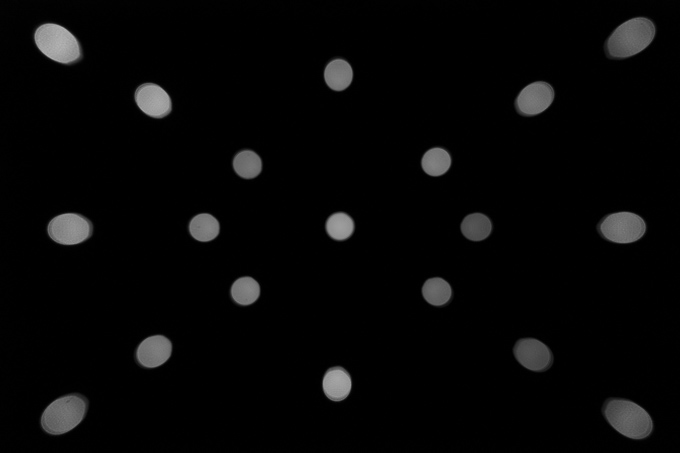
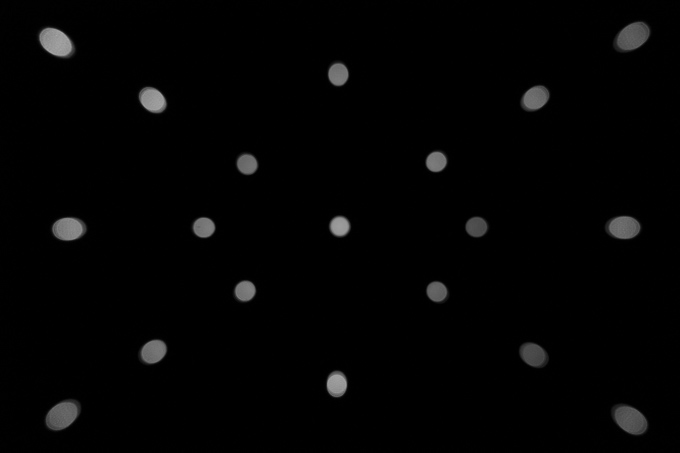
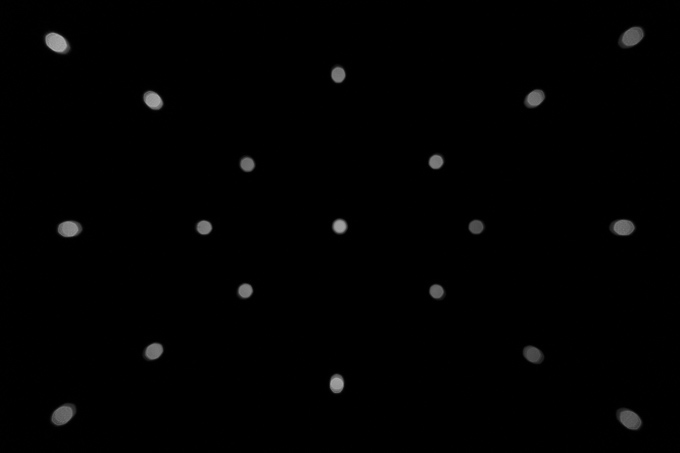
Sun Stars
Sun stars or bursts are aperture effects produced when bright light sources, such as the sun or street lights, are in the frame. The root cause of sun stars is diffraction, which occurs when light waves encounter an obstruction, such as the edges of the aperture blades in a stopped-down lens. Sun stars aren’t visible at maximum aperture because the aperture is perfectly circular at this setting.
Sigma has always emphasized the quality of the bokeh discs (very rounded aperture blades) over this effect. And it also shows here – sun stars are underdeveloped. Traces are beginning to show up at f/5.6 and f/8. At f/11 the rays are smearing out before recovering to fan-like rays at f/16. Overall, this is certainly not a strength of the lens. Sigma’s design decision is a bit weird here, to be honest. A 17mm f/4 is anything but a bokeh monster, so why try to improve the bokeh over sun stars, which are probably more important for most users in this specific lens segment?

Competition
Let’s see what other prime lenses are available in this class. The Sigma 17mm f/4 DG DN is shown to the left below. There’s the Samyang AF 18mm f/2.8 (2nd left). It’s pretty good optically and just as small, but it doesn’t “feel” quite as good mechanically. It’s very affordable, though. Another one is the Zeiss Batis 18mm f/2.8 (2nd right with lens hood). It’s a much bigger lens, as you can easily spot. Some swear on Zeiss color and 3D pop, and it’s pretty good indeed. It resides in a very different price sphere, though, and there are question marks about Zeiss’ engagement in the consumer lens market. The Sony FE 20mm f/1.8 G is certainly an interesting one – if a 20mm lens is sufficiently wide for you, that is. 20mm vs 17mm is quite a difference in terms of field-of-view. It’s fast, quite well-made, lightweight, very decent optically and not much more expensive than the Sigma.

Sample Images
The Sigma 17mm f/4 DG DN Contemporary | Series I isn't just cute—it also delivers robust performance, although it doesn't beat the best in class. The center quality is slightly dampened, but it still stays at very good to excellent levels in the relevant aperture range. The outer image field has no major weakness with good to very good results. Lateral CAs are very moderate. The RAW distortion shows strong barrel distortions. They are not excessive, though, and are fully auto-corrected. A negative outlier is the high RAW vignetting for such a slow lens - probably the result of the rather tiny front element. Auto-correction does its job, but the light falloff remains noticeable at f/4. It's also a good idea to keep the lens hood on while shooting because the lens is somewhat vulnerable to flare. The sun star rendering is also not ideal.
In terms of build quality, it's about as good as it gets, with one caveat. The Sigma lens is tiny yet feels very solid with its metal construction, smooth controls, and tight build tolerances. The use of metal even extends to the lens hood and a magnetic lens cap. The only aspect where it shows its "Contemporary" grade is the weather sealing, which is limited to the mount. The AF is speedy despite the stepping motor.
The Sigma 17mm f/4 DG DN Contemporary is probably not a crowd-pleaser. That's not because of its performance but because of its slow maximum aperture. However, not all of us require fast speeds and the inevitable bulk that comes along with them. The Sigma lens is clearly tuned towards a premium feel, a compact size, and low weight. If that's what you are looking for, the Sigma may just be the right lens.
-
Optical Quality
-
Build Quality
-
Price / Performance


